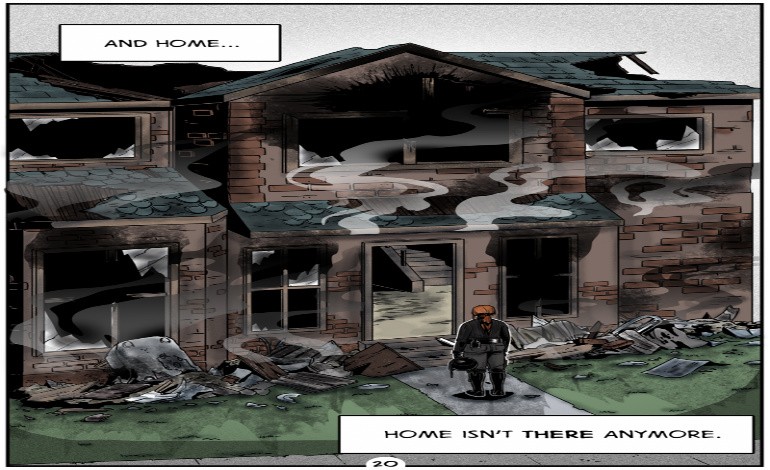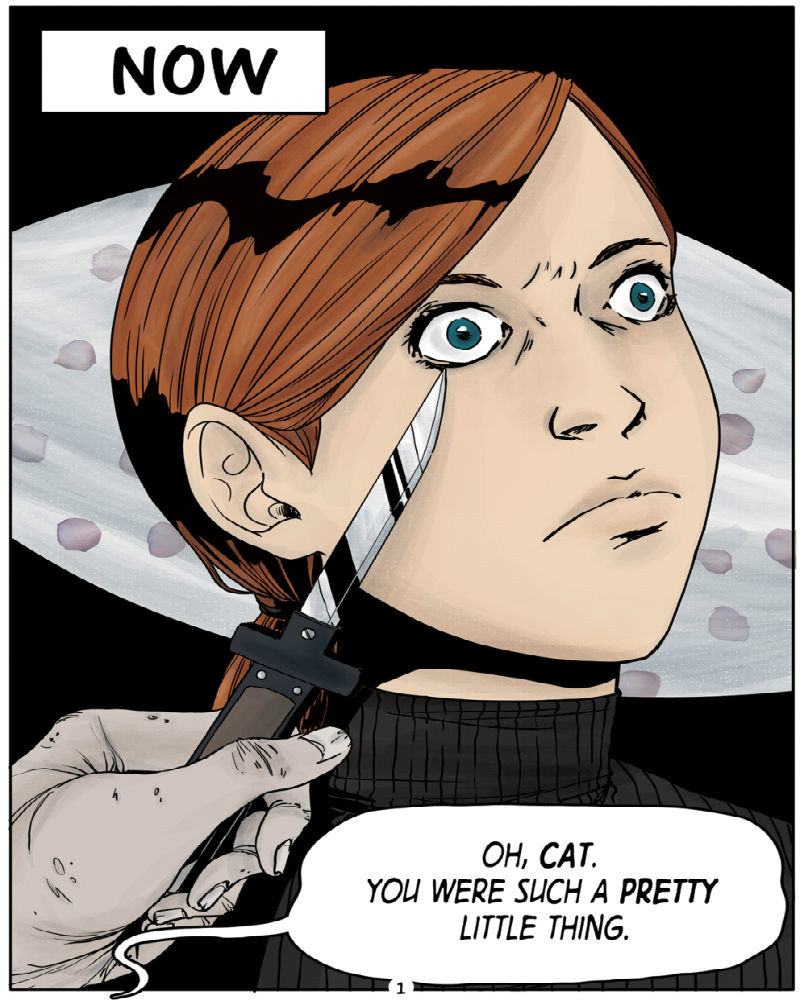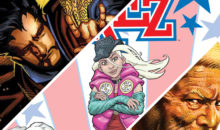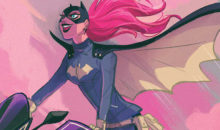My So-Called Secret Identity Or Carnival: When A Drama Becomes A Game
This is going to be a review of issue #4 of the comic My So-Called Secret Identity by Will Brooker, Suze Shore, and Sarah Zaidan. There will be spoilers and, as such, please read the series on their website first: it’s still ongoing and definitely worth the read.
When I last left off introducing My So-Called Secret Identity as Dr. Will Brooker’s response to a lack of strong female characters in mainstream comics, I talked about how its protagonist Cat just is, and she should be.
Unfortunately and as you can see, as this latest issue of the series starts off, both of these qualities are called into question. In Issue #3 of the comic it becomes very clear that Carnival, one of the main antagonists in Gloria City’s “theatre of heroes and villains” created a public ad in a newspaper addressed specifically to Cat and her method of linking different ideas and elements together.
As personal responses go, I felt a chill go down my back as I began to wonder what this meant and if there was some link between Carnival and Cat: especially given how he seemed to know how her mind works. Feliciano Carnival, as a villain, is something of a mixture between the Joker, an old-style crime boss, and a game show host with a Spanish background. He is the direct antagonist towards two of Gloria City’s celebrity superheroes: the Major that rules the City as Mayor and the black-masked Urbanite, seemingly both Captain America and Batman analogues respectively. In my last article on My So-Called Secret Identity, I compared its heroes to those in Garth Ennis’ The Boys when, in fact, they and their antagonists also have some nice resonance with the ironic and public superhero parody team the Five Swell Guys and their nemesis the Painted Doll in Alan Moore’s Promethea series. They too play the same parts, the same hero and villain cycle over and again which Moore lampoons and subverts.
The situation with Cat and Carnival is different. Cat is different. Whereas Carnival’s other opponents have their agreed upon script with him, she actually wants to stop him from, presumably, blowing up the World Trade Center. The fact that this story seems to take place in a different but parallel world from our own aside, while Cat seems to disrupt the scripts of the heroes — the “theatre” that they have created for two decades — she greatly intrigues Carnival: to the point where you really begin to wonder what’s actually going on.
Where Urbanite symbolizes a rough and authoritative patriarchy that threatens citizens and spouts out empty platitudes for everyone’s “own good” — to the point of his chest monitor displaying some ridiculous words and onomatopoeia, Sekhmet represents a woman attempting to survive a male-dominated profession to the point of becoming viciously competitive with other women in addition to her status as a woman of colour, and the superheroine Kyla Flyte is more of a shallow and empty doll — a token symbol of female empowerment — Carnival is the opposite side of the coin that is patriarchy: violent, misogynist, casually racist and having no regard for human life. The only difference, of course, is that he is a lot more honest about these traits compared to his heroic counterparts.
After all, as Dahlia — Cat’s landlady and fast friend — pointed out in Issue #3, women in “the theatre” tend to become permanently injured, or die. DC’s Oracle, formerly Batgirl, is an antecedent that comes to mind along with all those who become women in refrigerators. I also admit that I almost forgot who Dahlia even was and considered her a superheroine herself when heard her name: confusing it with the historical figure of Black Dahlia. After the events that unfold in this issue of My So-Called Secret Identity, I wonder if this was intentional: and I truly hope I’m wrong.
The fact of the matter is, when it comes down to it, after Cat manages to disable Carnival it is Urbanite who takes him away — who threatened to “silence” Cat “permanently” a few times if she got in his way again and who wants to do “things by the book” and not let his organized “war descend into anarchy” — who ultimately loses Carnival on his way to the asylum of Bedlam (where he usually “escapes” from anyway). At best, this is what happens when a lunatic is allowed to exist in, or is even created by, a world of superhero and villain culture in the place of guns with blind-spots towards their overall behaviour. At worst, it is complicity: especially when you begin to wonder just where Carnival gets his resources from and how he recruits his cell-agents. Either way, it is useful to remember that Urbanite and Carnival are ultimately two sides of the same coin.
It should also be noted, again, that Will Brooker is a Batman scholar and it does make me wonder just how much his studies and perspective on Batman have informed his creation and psychology of characters like Urbanite.
Cat goes back to her home only to find it in burned ruins along with Carnival, who was supposed to be in custody by the authorities, waiting for her with a knife. Dahlia even warns Cat earlier in this issue that not only does she endanger her life in participating in this “theatre,” but the lives of all those around her as well: including Dahlia’s young daughter. But it becomes very clear that this “theatre” means something very different to both Cat and Carnival.
For Carnival, the addition of Cat is just another excuse to treat the “theatre” for what it is: a game with hers and other people’s lives. In this case, he doesn’t even need to keep on script to deal with her. Her continued life isn’t necessary. It isn’t even made clear if he even meant to go for the World Trade Center or just left that threat to lure Cat to him. And as for Cat, this entire situation is her life writ large. After having spent most of her life with her intelligence and insights ignored or disparaged, she enters a world she has no other resources to draw on ruled by men who maintain power through violence and silence. If she hides, she and the people she cares for might get injured or die in this power-struggle. If she participates or speaks out, she will definitely make herself — and others around her — vulnerable.
She can’t win.
She just can’t win. This isn’t a drama. This isn’t a mythic cycle. Rather, Gloria City has become a game which — by the nature of its creators and participants — Cat cannot win. Even Urbanite’s sidekick — the Misper — warns her that his boss will take her to Bedlam, effectively gaslighting her if she gets in his way again. This is, of course, assuming that he won’t actively or passively kill her by letting Carnival do the job for him. In some ways, however, gaslighting is even worse for Cat than death: as it would be a method of making her doubt the source and question her sanity with regards to her true powers: her intelligence, her memory and her sense of agency.
In the meantime, though, Cat finds herself at the mercy of a system where patriarchal officials turn their heads and cluck their tongues as a madman holds a knife to her face: making her into another play piece, another statistic. For someone who values literature and philosophy, this is the ultimate dehumanization. This is the structure of fear and debasement — this coerced choice between becoming a symbol or death — that she wanted to save Dahlia’s young daughter Daisy from growing up and living in. And, right now, it’s iffy if Daisy will even grow up and if Cat will continue to be.
So Issue #4 of My So-Called Secret Identity leaves us with a lot of questions. I won’t lie. I do think that there are areas of this story that I feel need improvement. Pacing in comics panels can be a very tricky business and sometimes I felt that Brooker’s storytelling was rushed and condensed at times. I’m talking about the entire series so far in addition this current issue. For instance, I wanted to see more interactions with Cat and Enrique — also known as The Misper — and see the growing relationship with her, Dahlia and her housemates.
Sometimes Brooker repeats himself as well: such as when Cat repeats the thoughts she narrates about Carnival and the other heroes. And I am really curious as to what Cat thought she was going to accomplish walking into Carnival’s lair without weapons, backup, or seemingly even a plan. Was she simply hoping to scan her surroundings for more information to use against him in a form of logical argument or manipulation? I don’t really know. Perhaps this will be addressed in later issues.
But I will say that I love the characterizations and the mysteries that Brooker continues to keep in reserve. For instance, that whole flashback dating thirty years ago to that children’s show. Was that host Carnival? Why are his sclera black? Is there some kind of relation between him and the current Misper? Is there any significance to the fact that this show occurred ten years before Gloria City’s “theatre” began? Is Carnival as responsible for the Meta and Trans drugs as The Major’s family?
In the reverse of what Painted Doll turned out to be for Alan Moore’s Five Swell Guys but no less a parallel, when I saw Carnival sitting on those crates like they made up his throne, it gave me this eerie feeling — in addition to Cat’s words about him being the “King of Gloria” — that I was looking at the real power in Gloria City: with all heroes as his figureheads and all civilians his playthings.
Because make no mistake. Carnival is no longer an actor: if he ever was. But while he is not an actor, he is definitely a player.
There are other questions too. Are there real superpowers in this world or just more smoke and mirrors? Also, who is Doll’s Eyes? Are Cat’s friends still alive? For that matter, where is Cat’s policeman father? We know that her mother is dead, but he is left ambiguous: though the fact that she wants to avoid his old colleagues might say something about this matter.
And, more importantly, how will Cat get out of this? Will there be long-term consequences for Cat as a result of this? It’s doubtful that The Misper will save her again, or at least it would be very repetitive. Will Brooker kill her off and have someone else learn her method and continue her work years later? Like Daisy (if she has survived)? Perhaps Cat’s character arc might go the Oracle route and teach other younger women to listen to City beyond merely recognizing its dangers: to actually save it.
I have to say that I doubt that Brooker will go all G.R.R. Martin or DC Comics on us given how much work and his collaborators put into Cat and how much that would border on the refrigerator woman trope: just as much I highly doubt as Carnival will kill her right now. At the moment, she is entertaining him. Her presence is, as he put it sickeningly enough, “porn”: an object to entertain and titillate him even in a non-sexual way. Is this the point where this story truly branches into a reality not unlike Mark Millar’s Kick-Ass: where a would-be hero truly and physically suffers, and dies for trying to be a superhero in an unforgiving reality?
Or will she survive and realize that she will need help and a different way to approach this game? Is there is another way of approaching this game? Is there a way to go beyond the mentality of losing and winning to deal with reality?
Is Cat another casualty, or has her presence changed the game?
Will Brooker, Suze Shore and Sarah Zaidan have some questions to answer and I look forward to finding out the answers to these questions, and more, in “Second Life.” It is a fitting title: as My So-Called Secret Identity is being launched soon on June 16. So please support it and remember to Like the series on its Facebook page.














It was indeed Carnaval in his days as a kids’ TV show host in that “30 Years Ago” flashback. The mind-map in # 1 sets this up.
Thank you for the insight, Dwight Williams. Actually, the mind-map in #1 of MSCSI sets up a lot of elements and even potentially answers some of my questions. I really need to look at the other mind-maps now: http://www.mysocalledsecretidentity.com/sites/default/files/comics/V1_P14_15.png